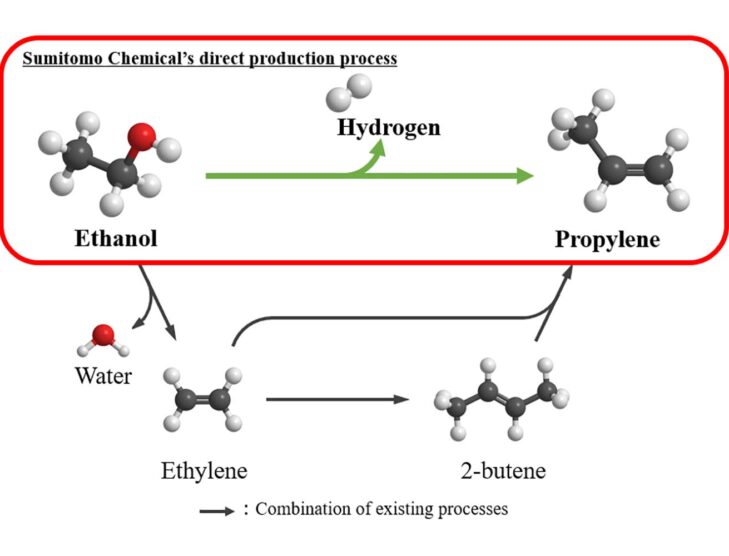
Sumitomo Chemical to convert ethanol directly into propylene
Sumitomo Chemical, a major Japanese chemical company headquartered in Tokyo, has commenced the construction of a pilot plant designed to pioneer a method for converting ethanol directly into propylene. Recognised for its potential as a green chemical raw material, this technological endeavor is funded by the Green Innovation (GI) Fund of Japan’s New Energy and Industrial Technology Development Organization (NEDO).
Sumitomo Chemical intends to wrap up the facility’s construction at its Sodegaura division in Chiba Works, Japan, by mid-2025, pushing forward to integrate the technology into real-world applications.
Propylene, a pivotal chemical commodity, is predominantly derived from fossil-based sources like naphtha, marking its identity as a primary petrochemical. In contrast, ethanol has potential origins in biomass, such as sugarcane and corn. It’s anticipated that large-scale ethanol production technologies, using combustible waste, discarded plastics, or CO2, will be realized shortly. The spotlight is thus shifting to ethanol as a renewable fundamental chemical raw material.
Sumitomo Chemical is innovating a unique method to produce propylene from ethanol. This direct conversion of ethanol to propylene offers benefits like reduced costs and a more streamlined process than conventional multi-step methods. A noteworthy aspect of this process is the concurrent generation of hydrogen as a byproduct while producing consistently high-demand propylene.
Data essential for magnifying the process for industrial-scale output will be gathered from this pilot installation. Furthermore, Sumitomo Chemical will furnish polypropylene samples, created using the propylene from this pilot setup, for client assessment. Aiming for the early 2030s, the company plans to kick-start commercial production using this novel process and even license the technology to peer enterprises.
Sumitomo Chemical reaffirms its commitment to fostering a carbon-neutral society and advancing the circular economy through the inception of groundbreaking production techniques.
.jpg)







